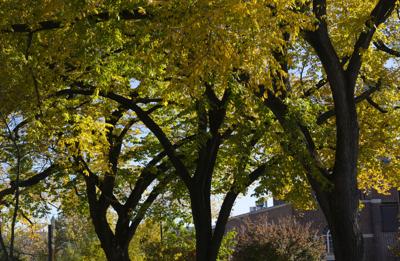Kaleigh Quinnan | The Daily Collegian
Nov 8, 2019

Samantha Wilson
Sustainability is something that has become the topic of many conversations as the threat of climate change becomes more tangible worldwide, and it will likely continue to do so. The truth is, the way humans exist now is not sustainable — and it needs to be, in every aspect of our lives.
One of the more common examples of human impact that is brought to our attention is the trash currently amassing in our oceans. According to National Geographic, “There are 5.25 trillion pieces of plastic debris in the ocean. Of that mass, 269,000 tons float on the surface, while some four billion plastic microfibers per square kilometer litter the deep sea.”
This amount of plastic is not just a number we can overlook, nor is it limited to the ocean. It is now part of our ecosystem: we eat the fish that eat the plastic, meaning that plastic has become a part of us too. We consume a substantial amount of microplastics each year, without really knowing how it is going to affect our health. Surely, it cannot help.
But cleaning the oceans is not an easy task, nor is it a task that individuals can take on realistically in their lifetimes. Idealistically, the corporations and governments responsible for poisoning the earth would make substantial efforts to make change. If another country came into the United States and poisoned the water and dug up the land, we would go to war — but because it is large corporations doing the damage, we reward them by giving them tax breaks.
The point of this column is not to attack large corporations and governments (although I am sure that I have written one on the topic before), but rather to point out that similar to how environmental destruction comes in many different forms, so does sustainability.
This semester I am fortunate enough to be taking a class called sustainable studio with Helen O’Leary and Kimberly Flick, both of whom are artists who are familiar with materials and organic sourcing. This sort of opened up another world of what it meant to be sustainable for me: sourcing materials and objects in order to create colors, art and function could all be made without creating more waste as well.
The premise behind this class is that it uses the student farm to source materials to create dyes, which are then used to color fabrics that are thrifted or made from plant or animal fibers. The course also investigates how ancient peoples created using the earth as their only resource, and how it applies to modern day.
Now, obviously it would be impossible for most people to follow the sustainable constructs of this course in every aspect of their lives. It is interesting to think, however, of source materials and what you can do to make sure that the products you use are predominately reusable or able to be repurposed in some way.
Classes that teach sustainability can lead us toward a more sustainable future, not only in the arts but in other subject matters as well, so that as a generation we will have a better understanding of how to help the planet.
Kaleigh Quinnan
Kaleigh Quinnan is a graphic designer for The Daily Collegian. She is a senior double majoring in fine arts with a drawing and painting concentration and French with a business concentration. She has a minor in political science.

Hello Admin,
Your blog seems really useful for us. We also want to draw your attention to our Check Best Lawn Fertilizers for Summer
https://oakia.com/lawn-fertilizers/ #gardening #oakia.com #garden